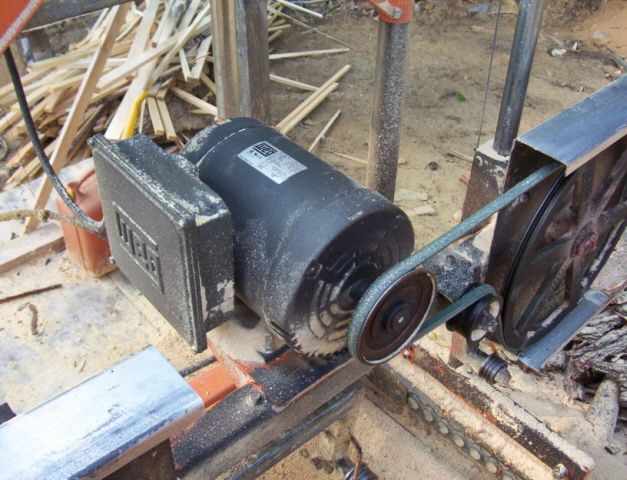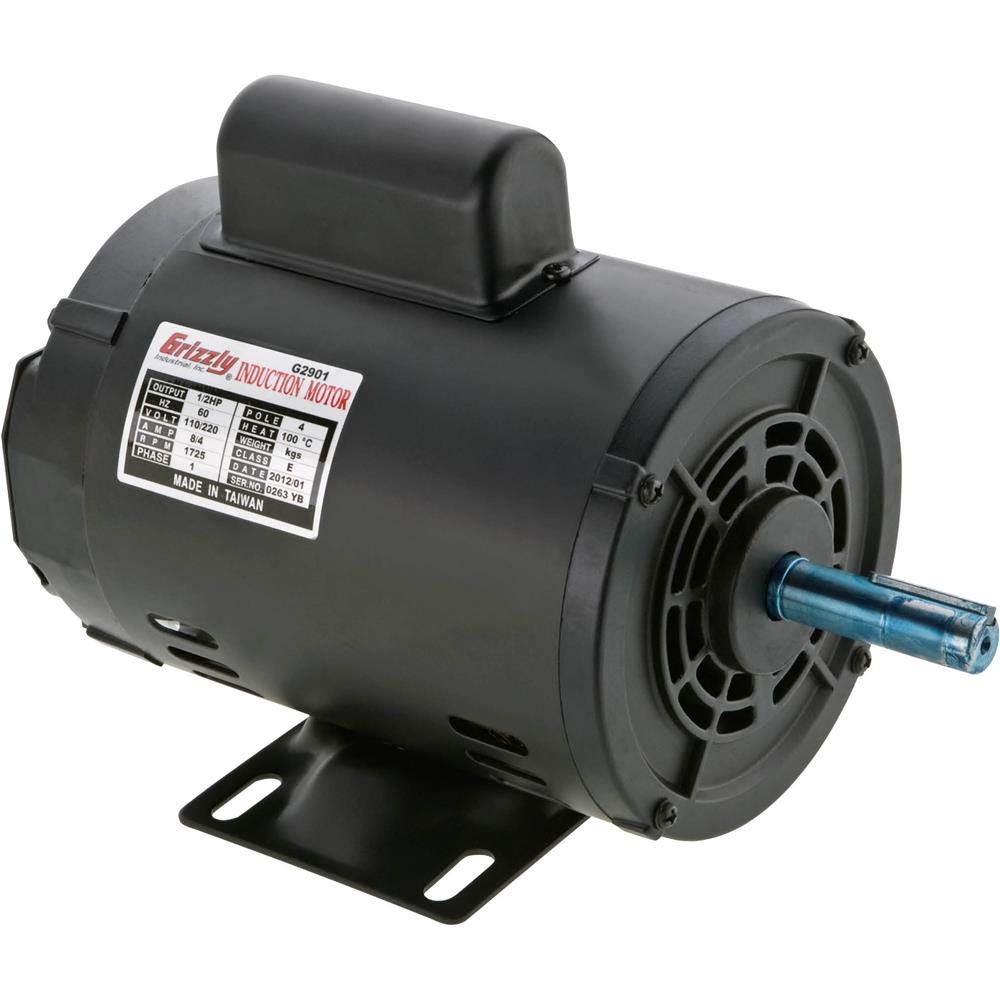So, you’ve got yourself a bandsaw and now you’re wondering, “What size electric motor should I get?” Well, you’ve come to the right place! We’re here to help you find the perfect motor to power up your bandsaw and make those cuts with ease.
Choosing the right motor size is crucial to ensure optimal performance and efficiency for your bandsaw. But don’t worry, we’ll break it down for you in simple terms.
In this article, we’ll walk you through the factors to consider when determining the size of an electric motor for your bandsaw. From understanding horsepower requirements to considering the type of material you’ll be cutting, we’ve got you covered. So let’s dive in and get your bandsaw up and running smoothly!
Step-by-Step Guide:
- Identify the power requirements of your bandsaw.
- Determine the load the bandsaw will be handling.
- Consider the speed and torque needed for optimal performance.
- Calculate the power output required based on these factors.
- Select a motor size that meets or exceeds the calculated power output.
Follow these steps to find the perfect electric motor size for your bandsaw. Happy cutting!

What Size Electric Motor for Bandsaw: A Comprehensive Guide
When it comes to choosing the right size electric motor for your bandsaw, many factors come into play. The motor is a crucial component of the bandsaw, responsible for powering the cutting action. Selecting the appropriate size ensures optimal performance, efficiency, and longevity for your bandsaw. In this article, we will delve into the intricacies of choosing the right motor size for your bandsaw and provide you with a detailed guide to make an informed decision.
Factors to Consider When Choosing an Electric Motor for Your Bandsaw
Before delving into the specifics of motor sizes, it is essential to understand the factors that influence your choice. Here are the key considerations you should keep in mind:
1. Power Requirements
The power requirements of your bandsaw will play a significant role in determining the appropriate motor size. Higher horsepower (HP) motors will provide more cutting power, allowing you to handle thicker and denser materials. However, it is important to strike the right balance, as oversized motors can lead to excessive wear and tear, while undersized motors may strain and result in poor performance. Consider the type of work you will be doing with your bandsaw and choose a motor size that matches those requirements.
2. Blade Speed
The speed at which the bandsaw blade rotates also affects your motor selection. Faster blade speeds require more power to maintain consistent cutting performance. If you anticipate working with a variety of materials and cuts, it is advisable to choose a motor with adjustable speed settings to accommodate different applications. This flexibility allows you to optimize the blade speed based on the specific requirements of each task.
3. Bandwheel Diameter
The diameter of the bandwheels on your bandsaw plays a role in determining the motor size. Larger bandwheels require more power to drive the blade effectively, as they have a larger circumference that needs to be covered with each rotation. Smaller bandwheels, on the other hand, can be driven by motors with lower horsepower ratings. Be sure to check the specifications of your bandsaw to determine the appropriate motor size based on the bandwheel diameter.
Choosing the Right Motor Size for Your Bandsaw
Now that we have covered the key factors to consider, let’s dive into the details of choosing the right motor size for your bandsaw. Remember, the appropriate size will depend on your specific needs and the type of work you will be doing. Here are three important considerations to keep in mind:
1. Determine the Required Horsepower (HP)
To determine the required horsepower for your bandsaw, you need to consider the maximum cutting capacity you require. Measure the largest stock you plan to cut regularly and check the manufacturer’s recommendations for the corresponding motor size. It is generally recommended to add a buffer of 25-50% to the minimum motor size to ensure smooth and efficient operation.
2. Consider Efficiency and Energy Consumption
While it may be tempting to opt for the largest motor available, it is important to consider the efficiency and energy consumption of your bandsaw. Oversized motors can consume more energy, resulting in higher operating costs. Additionally, they may generate more heat and noise, affecting the overall performance and longevity of your bandsaw. Carefully consider the balance between power requirements and efficiency when choosing the motor size.
3. Seek Expert Advice
If you are unsure about the appropriate motor size for your bandsaw, it is always best to seek advice from industry experts or consult the manufacturer’s recommendations. These professionals can provide valuable insights based on their experience and expertise, ensuring you select the ideal motor size for your specific bandsaw model.
Tips for Maintaining and Optimizing Your Electric Bandsaw Motor
Now that you have selected and installed the right size electric motor for your bandsaw, it’s crucial to properly maintain and optimize its performance. Here are some tips to keep in mind:
1. Regular Lubrication
Ensure you follow the manufacturer’s recommendations for regular lubrication of the motor. Proper lubrication helps reduce friction, heat, and wear, extending the lifespan of your motor. Use high-quality lubricants and keep track of the maintenance schedule to keep your motor running smoothly.
2. Cleanliness and Dust Management
Bandsaw motors are susceptible to dust and debris buildup, which can affect their performance and lifespan. Regularly clean the motor housing, vents, and cooling fans to prevent clogging and overheating. Implement effective dust management strategies, such as using a dust collection system, to minimize the accumulation of debris.
3. Monitor and Address Vibrations
Excessive vibrations can indicate issues with your motor or bandsaw, potentially leading to damage or reduced performance. Periodically inspect your bandsaw for any signs of excessive vibration and address the underlying causes promptly. Loose or misaligned components, worn bearings, or blade issues could all contribute to vibrations.
In conclusion, selecting the right size electric motor for your bandsaw is crucial for optimal performance and longevity. Consider factors such as power requirements, blade speed, and bandwheel diameter when making your decision. Remember to determine the required horsepower, consider efficiency and seek expert advice if needed. Additionally, proper maintenance and optimization of your bandsaw motor will ensure consistent and reliable performance. Follow the tips provided to keep your motor running smoothly and enjoy precise and efficient cuts with your bandsaw for years to come.
Key Takeaways: What Size Electric Motor for Bandsaw?
- Choosing the right electric motor for your bandsaw is crucial for optimal performance.
- To determine the size, consider factors such as blade size, cutting depth, and material being cut.
- Smaller bandsaws typically require motors with a horsepower rating between 1/2 and 1 horsepower.
- Larger bandsaws may need motors with higher horsepower ratings, ranging from 1.5 to 3 horsepower.
- Always refer to the manufacturer’s recommendations for the specific bandsaw model you have.
Frequently Asked Questions
Welcome to our Frequently Asked Questions section on selecting the appropriate electric motor size for a bandsaw. We understand that this can be a confusing topic, so we’re here to provide you with clear and concise answers. Read on to find out more!
1. How do I determine the right size electric motor for my bandsaw?
Determining the right size electric motor for your bandsaw depends on a few key factors. First, consider the size and power requirements of your bandsaw. Smaller bandsaws typically require motors with lower horsepower, while larger ones will need motors with higher horsepower.
Second, think about the type of wood you’ll be cutting and the depth of the cuts you’ll be making. Hardwoods and thicker cuts require more power, so you’ll need a motor that can handle the workload. Finally, don’t forget to take into account the voltage available in your workshop and whether the motor requires single-phase or three-phase power.
2. Can I use a smaller motor than recommended for my bandsaw?
While it might be tempting to use a smaller motor for your bandsaw to save money or space, it’s not recommended. A smaller motor may struggle to provide the necessary power for cutting through thick or hard materials, which can lead to overheating and premature motor failure.
Using the recommended motor size ensures that your bandsaw operates efficiently and effectively, minimizing the risk of motor burnout and maximizing the lifespan of your equipment. It’s best to follow the manufacturer’s guidelines to ensure optimal performance and safety.
3. Are there any benefits to using a larger motor for my bandsaw?
Using a larger motor than what is recommended for your bandsaw can offer a few benefits. First, it provides extra power, allowing you to cut through tougher materials with ease. This can be particularly helpful if you frequently work with thick or hardwoods.
Second, a larger motor tends to run cooler and puts less strain on the motor, resulting in a longer lifespan for the equipment. Additionally, the extra power provided by a larger motor can improve the overall cutting speed and efficiency of your bandsaw, saving you time and effort in the long run.
4. Can I upgrade the motor size on my existing bandsaw?
In many cases, it is possible to upgrade the motor size on an existing bandsaw. However, it’s important to consult the manufacturer’s guidelines and seek professional advice before making any modifications. Upgrading the motor may require adjustments to the pulley system, belt, or even the electrical wiring of the bandsaw.
Working with a professional ensures that the upgrade is done correctly and safely, preventing any potential damage to the bandsaw or hazards in your workshop. It’s always best to seek expert guidance when making significant modifications to your equipment.
5. Can I use a variable speed controller with any size electric motor for my bandsaw?
Using a variable speed controller with your bandsaw can offer greater versatility and control over your cutting speed. However, not all electric motors are compatible with variable speed controllers. It’s essential to check the motor specifications and consult the manufacturer’s guidelines to determine if your motor can be used with a variable speed controller.
If your motor is compatible, installing a variable speed controller can allow you to adjust the cutting speed to match different materials and cutting techniques, enhancing the precision and quality of your cuts. Be sure to follow the instructions provided by the manufacturer when installing and using a variable speed controller.

Summary
So, what size electric motor should you get for your bandsaw? It depends on the size and type of bandsaw you have.
If you have a smaller benchtop bandsaw, a 1/2 to 1 horsepower motor should do the trick. For larger floor-standing bandsaws, you’ll typically need a motor with at least 1.5 to 2 horsepower.
Make sure to check the manufacturer’s recommendations to ensure you get the right motor for your specific bandsaw. Don’t forget safety precautions and happy sawing!
